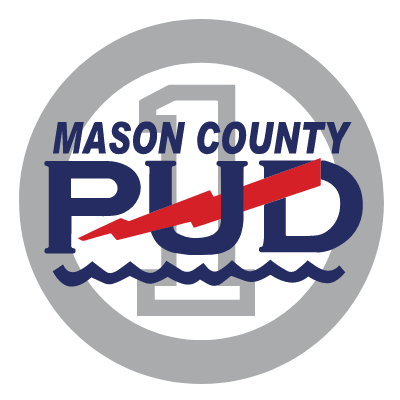An Op/Ed from Jack Janda, chair of the Mason County PUD No. 1 board of commissioners and Linda Gott, chair of the Mason County PUD No. 3 board of commissioners.
Mason County’s two public utility districts, PUD 1 and PUD 3 proudly serve their customers with safe, reliable electrical service at the lowest reasonable cost. Both districts are concerned about a recent policy statement from the US Department of Energy that, if allowed to proceed, could have drastic impacts on wholesale electricity rates. Further, it could erode the very basis of public power in the Pacific Northwest: local control.
US Energy Secretary Steven Chu recently issued a memo to the Bonneville Power Administration (BPA) and other similar power agencies across the country that appears to foreshadow a big government takeover of many regional programs relating to renewable energy, energy efficiency, and new technologies.
Since nearly all the electricity used by Mason County customers is marketed through BPA, any additional responsibilities ordered by the federal government would most certainly be felt locally in the form of higher rates.
In the Pacific Northwest nearly all the goals of the memo are already being addressed. In fact, many of the region’s programs are nationally recognized for their innovation and effectiveness. Both Mason County PUDs and other utilities across the region have promoted and successfully achieved energy efficiency for years. PUD 1 customers saved 200,529 kilowatt-hours of electricity in the 2010-2011 biennium. PUD 3 customers cut their consumption by 13,701 megawatt-hours of electricity per year during that same period.
The region has made great strides in developing and melding new renewable energy resources into the mix of energy that powers customers’ homes and businesses. Nearly 4,500 megawatts of wind energy flows into the BPA system. So much wind energy has been brought online and melded into the system that there is more than our region needs.
All this begs the question: If the Pacific Northwest is already doing what the energy secretary says he wants all regions of the country to pursue, what is his underlying purpose?
In addition to cost, we are concerned that the secretary’s proposal would shift energy decisions from local control to a federal agency in the other Washington. Public utility districts were founded on the principle that local communities are the most appropriate managers of critical resources, such as energy. Utilities throughout the Pacific Northwest work closely with BPA to determine the best way to manage the electricity that powers the region. Directives from nearly 3,000 miles away cannot, and should not replace this collaborative, regionally based process.
The energy secretary should reconsider his proposals and listen to the voices of public power customers, the local PUDs that serve them, and the 166 members of Congress, including members of Washington’s delegation, who sent a letter to the secretary expressing their discontent with his plans.
Together, we ask customers in both Mason County public utility districts to contact their members of Congress and US Senate to thank them for supporting us and to encourage them to stay vigilant in the fight to head off this latest effort to wrest local control from the region.
Since nearly all the electricity used by Mason County customers is marketed through BPA, any additional responsibilities ordered by the federal government would most certainly be felt locally in the form of higher rates.
In the Pacific Northwest nearly all the goals of the memo are already being addressed. In fact, many of the region’s programs are nationally recognized for their innovation and effectiveness. Both Mason County PUDs and other utilities across the region have promoted and successfully achieved energy efficiency for years. PUD 1 customers saved 200,529 kilowatt-hours of electricity in the 2010-2011 biennium. PUD 3 customers cut their consumption by 13,701 megawatt-hours of electricity per year during that same period.
The region has made great strides in developing and melding new renewable energy resources into the mix of energy that powers customers’ homes and businesses. Nearly 4,500 megawatts of wind energy flows into the BPA system. So much wind energy has been brought online and melded into the system that there is more than our region needs.
All this begs the question: If the Pacific Northwest is already doing what the energy secretary says he wants all regions of the country to pursue, what is his underlying purpose?
In addition to cost, we are concerned that the secretary’s proposal would shift energy decisions from local control to a federal agency in the other Washington. Public utility districts were founded on the principle that local communities are the most appropriate managers of critical resources, such as energy. Utilities throughout the Pacific Northwest work closely with BPA to determine the best way to manage the electricity that powers the region. Directives from nearly 3,000 miles away cannot, and should not replace this collaborative, regionally based process.
The energy secretary should reconsider his proposals and listen to the voices of public power customers, the local PUDs that serve them, and the 166 members of Congress, including members of Washington’s delegation, who sent a letter to the secretary expressing their discontent with his plans.
Together, we ask customers in both Mason County public utility districts to contact their members of Congress and US Senate to thank them for supporting us and to encourage them to stay vigilant in the fight to head off this latest effort to wrest local control from the region.
